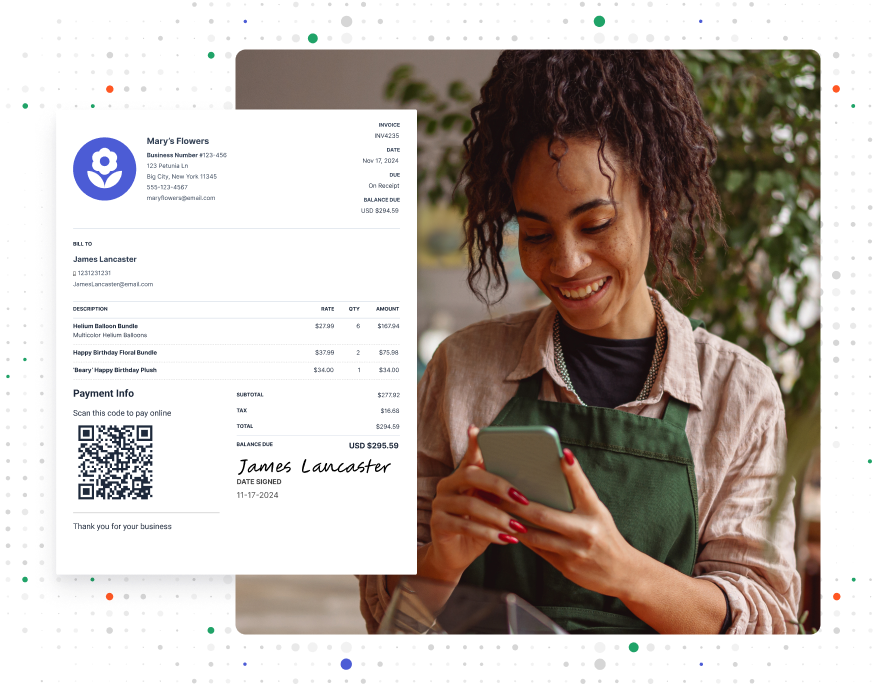How To Calculate Wholesale Price: Methods and Examples

If “The Price Is Right” had a business edition, wholesale pricing would be the grand prize game. Luckily, we’ve got the cheat codes for getting it right every time.
Understanding wholesale prices—meaning prices charged by a business selling in bulk to other businesses—is a key part of running a successful company. Here’s a guide to how to calculate wholesale prices like a pro. Learn what they are, examples of pricing methods, and expert tips.
What Are Wholesale Prices?
Wholesale prices are what businesses charge when they sell large amounts of products to other businesses rather than to everyday shoppers. They’re what price stores pay when they buy items to stock their shelves. This price is usually much lower than what you see in stores because it doesn’t include all the extra costs and profit margins businesses add on later.
When a business sets its wholesale price, it has to cover all the costs of making the product, plus a little extra to make a profit. But it can’t set the price too high, or other businesses won’t want to buy from them. It’s a careful balance between making enough money and keeping prices attractive for buyers who intend to resell the wholesale products.
Retail Price Versus Wholesale Price
The main difference between retail and wholesale prices is who’s buying the product. Retail prices are what you see when you go shopping at a store or online. These prices are meant for individual customers. Wholesale prices, on the other hand, are for businesses buying from other businesses.
The gap between wholesale and retail prices can be big or small, depending on the type of product and how much the store hopes to make. Some stores might double the wholesale price, while others might only add a little bit extra. It all depends on your business strategy and what customers are willing to pay.
RELATED ARTICLE — How To Calculate Cash Flow: Key Formulas and Practical Examples
5 Wholesale Pricing Methods With Examples
There are many different methods you can use to set your wholesale prices. Each one uses its own way of thinking about costs and profits. Here are five common methods to solidify your understanding of how they work for wholesalers:
1. Keystone Pricing
If you want to know how to calculate a wholesale price from the retail price, this method is one of the easiest ways. Simply take the retail price and cut it in half to get the wholesale price.
For example, if you sell handmade soap bars for $10 each in stores, your wholesale price will be $5.
2. Cost-Plus Pricing
This is another simple method that doesn’t require much calculation. The price formula takes what it costs to make your product and adds a markup percentage for the profit margin.
Suppose you make pottery mugs, your production costs are $4, and you want to make a 50% profit. You’ll add 50% of $4—which is $2—to the production costs. The wholesale price will be $6.
3. Value-Based Pricing
This method sets prices based on how much customers think your product is worth, not just on costs.
For example, if you make high-quality, handcrafted jewelry that lasts for years, you might price it higher than mass-produced versions. If customers believe your products are worth $100 because of their quality and durability, you can set your wholesale price at $50, even if they only cost $20 to make.
4. Absorption Pricing
With this method, you add up all your costs—not just for making the product, but also for things like rent and bills—and add your profit target on top.
Let’s say it costs you $3 to make a candle, and other business costs add another $1 per candle. If you want to make a $2 profit on each candle, your wholesale price would be $6 ($3 + $1 + $2).
5. Differentiated Pricing
With this method, you set different prices based on variable factors like the season or customer profiles.
Let’s say you sell beach umbrellas. During the summer, when demand is high, your wholesale price might be $20 per umbrella. But in the winter, you might lower the price to $15 per umbrella to encourage stores to stock up early when there’s less demand.
RELATED ARTICLE — How To Use Profitability Ratios to Improve Financial Performance
4 Easy Steps To Calculate Wholesale Prices

Let’s break down the process of setting wholesale prices into simple steps. Following these steps helps you come up with prices that work for your business and your customers:
1. Conduct Market Research
Before you set any prices, look at what other wholesale businesses are doing. Check out prices for similar products in stores and online. This gives you an idea of what customers expect to pay and what the competition is charging.
2. Calculate Costs
Figure out how much it costs you to make your wholesale items. Include direct costs for items like materials and labor. Don’t forget about overhead costs like rent, bills, and marketing.
3. Set Your Profit Margin
Decide how much profit you want to make on each sale. This could be a percentage of your costs or a fixed amount.
4. Determine a Pricing Strategy
Choose which pricing method works best for your business, whether it’s keystone pricing, absorption pricing, or something else. Pick the one that best fits your products and business goals.
For example, if you’re confident customers think your product is worth a lot of money, value-based pricing may give you the most profits.
FROM ONE OF OUR PARTNERS — How To Calculate Gross Profit Margin
5 Common Mistakes When Calculating Wholesale Prices
Even with the best intentions and careful planning, business owners sometimes make mistakes when setting their wholesale prices. Being aware of these common errors can help you avoid them:
- Using a “One Size Fits All” Formula. Every product is different, and so are the costs to make and sell them. Using the same pricing method for everything you sell might work for some products but cause problems for others.
- Not Setting or Miscalculating the MSRP. First, what does MSRP mean in the wholesale business? The MSRP, or manufacturer’s suggested retail price, is simply the price you suggest stores charge customers. If it’s too low, stores won’t make enough profit and might stop carrying your product. If it’s too high or doesn’t exist at all, stores might overprice your item, leading to fewer sales and discouraging stores from buying your products again.
- Forgetting To Account for All Costs. It’s easy to remember the obvious costs like materials, but don’t forget about things like shipping, packaging, or even the time you spend managing your business. Leaving out costs means you won’t make as much money as you expect or need.
- Underpricing. If you set prices too low, you might not make enough money to keep your business going. It can also make people think your products are of lower quality.
- Overpricing. On the flip side, if your prices are too high, you might scare away potential customers. Make sure your prices match the quality of your products and what people expect to pay for them.
RELATED ARTICLE — The Top Financial KPIs To Monitor for Your Business
Calculating Wholesale Prices Like a Pro: 3 Top Tips

These tips will help you stay on top of your game and make sure your prices fit in smoothly with your business:
- Review and Adjust Regularly. Your prices shouldn’t be set in stone. Keep an eye on how well they’re working for your business. If your costs go up or down or if the market changes, you might need to change your prices accordingly. Checking and (if necessary) adjusting prices every few months keeps your business healthy.
- Consider Sales Volumes. Think about how many wholesale items you expect to sell. If you’re selling a lot, you might be able to lower your prices a little because you’re making money on more sales. But if you’re only selling a small amount, you might need to charge more to make sure you’re covering all your costs.
- Stay Flexible and Open to Negotiation. While it’s good to have set prices, be ready to negotiate with your customers. Big orders or long-term contracts might be worth discounting because they lead to more loyal customers.
Stay on Brand and Look Professional With Invoice Simple
Attractive branding is the perfect complement to attractive prices. And that starts with Invoice Simple.
Invoice Simple’s estimate and invoice templates are fully brandable to your business—with no watermarks, ever. Your invoices will always look professional and match your brand. Start with a clean, modern template design, then simply add your logo.
Start Your First
Invoice Today
Create customized and professional
invoices and connect with clients
